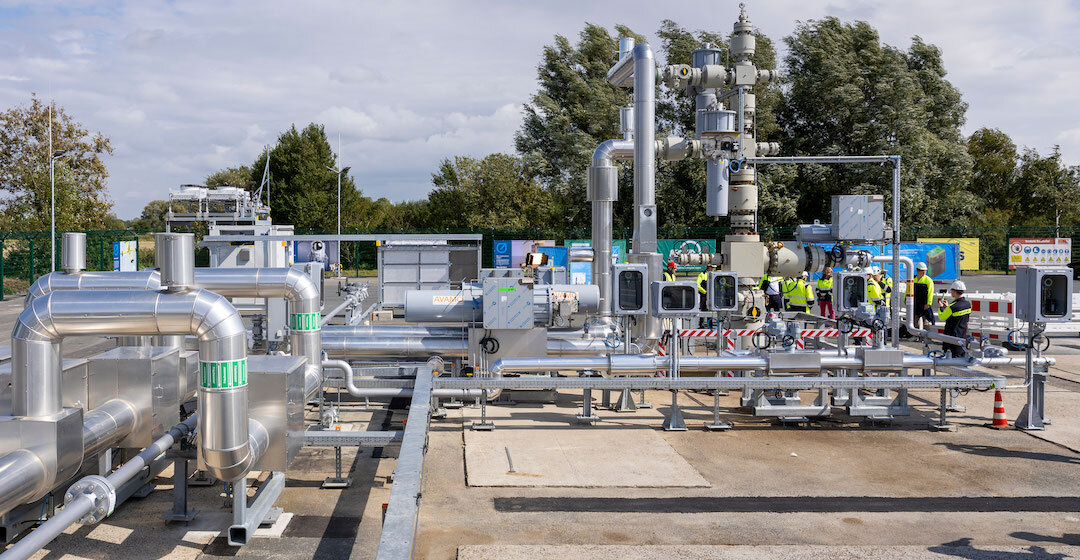Michael Schmöltzer, Branch Manager of Uniper Energy Storage Austria, provides insights into the current vision and reality of the H2 economy.
power2market: Due to your work in the storage of gaseous energy sources, you are very close to the action. How do you see the H2 sector developing now that the original H2 hype has turned into more realism? Also in light of the fact that the IEA has reduced the electrolyser capacity required to achieve the Net Zero scenario (interim target for 2030) from > 800 GW (as at 2021) to just under 600 GW (as at 2023)?
Michael Schmöltzer: The development of the hydrogen sector has made some important progress in recent years. The initial enthusiasm for hydrogen has indeed changed into a more realistic assessment of the opportunities and challenges. This is also necessary in order to find sustainable and long-term solutions.
The IEA's reduction of the required electrolyser capacity shows how dynamically this environment is developing. Technological advances, improved efficiency and growing experience are helping to make our targets more realistic and achievable. As part of our work at Uniper, we have recognised that the integration of hydrogen into the existing energy infrastructure plays a key role. Without storage, it will not be possible to bring hydrogen power plants to the market. However, it is also important that we continue to invest in research and development to improve the technology and reduce costs. In addition, we need to ensure close co-operation with all relevant stakeholders to accelerate the implementation of hydrogen solutions.
Overall, despite the challenges, I believe that the hydrogen sector has enormous potential to contribute to decarbonisation and energy security. However, we need to take a pragmatic and targeted approach to gradually develop the market from individual clusters to a "meshed" system. This has taken more than 30 years for the gas market.

H2 storage facilities are indispensable for a successful, comprehensive H2 ramp-up. Why has this essential component of an H2 economy come into focus so late - especially since the realisation of an H2 storage facility takes more than 5 years and thus the timetable for the development of the H2 industry is even tighter?
MS: The need for storage is indeed an essential component for a successful hydrogen economy. The reason why this topic is only now increasingly coming into focus is partly due to the complex technical requirements and the long lead times for the realisation of such projects. The construction of hydrogen storage facilities not only requires considerable investment, but also extensive planning and authorisation procedures that can take several years. Just as important as a regulatory framework is a financing framework that minimises the risks of market development so that investment decisions can be made at an early stage.
Another factor is the previous focus on the production and transport of hydrogen, while storage has only recently been given greater consideration. In addition, the development and scaling of storage technologies, which are necessary for the safe and efficient operation of storage facilities, has taken time. To avoid further delaying the timetable for the hydrogen ramp-up, it is therefore crucial that we now focus more on the development and implementation of storage solutions. This requires close co-operation between industry, research institutions and regulatory authorities in order to create the necessary framework conditions. This is the only way we can achieve the desired goals of the hydrogen economy and contribute to decarbonisation.

Picture: © Uniper
Uniper is currently primarily involved in the realisation of cavern storage facilities in Germany. At the same time, tests are also being carried out on the storage of H2 in pore storage facilities. Can you disclose the results of the tests and if so, what are they?
MS: Storing hydrogen in caverns offers a promising way of balancing out seasonal fluctuations in energy demand and ensuring a stable energy supply. Our tests in Germany have shown that cavern storage systems offer high storage capacity and efficiency.
At the same time, we have also investigated the storage of hydrogen in pore storage systems. The results so far are promising and show that this method is also an efficient and safe way of storing hydrogen. Both cavern and pore storage systems have their own advantages and disadvantages, which we are continuously evaluating for various applications and customer requirements.
To summarise, it can be said that hydrogen storage is an essential component of a sustainable and future-oriented energy infrastructure. An integrated development of grids, storage facilities and import terminals would also be the most efficient approach in economic terms. We are continuously researching and developing in order to find the best solutions for the hydrogen economy. For example, we have also analysed customer requirements as part of a market demand survey.
As the natural gas sector is changing very quickly - due, among other things, to the planned implementation of the H2 industry but also to the envisaged implementation of the carbon management strategy - you have mentioned the need for a comprehensive storage strategy. Are you thinking of "only" analysing the mutual interdependencies between natural gas, H2 and an emerging CO2 infrastructure in the envisaged storage strategy or would you also suggest including the development of battery storage and the expansion of pumped storage?
MS: A comprehensive storage strategy should include all storage solutions in terms of their mode of operation. Above all, it would also make sense to consider the interactions between natural gas, hydrogen, CO2 infrastructure and short-term energy storage in order to ensure a coordinated transformation process. This would enable a holistic view of energy storage technologies and ensure that all options for stabilising the energy supply and supporting the decarbonisation targets are examined. Even though the use of gas will decline in the coming years, underground gas storage facilities will remain indispensable for covering peak loads and ensuring security of supply for a long time to come.
How could the task of storage strategy be tackled pragmatically?
- Designing a regulatory and financing model in order to be able to continue operating existing storage facilities to maintain security of supply and to incentivise investment in the conversion or new construction of H2 storage facilities. The development of the regulatory framework should be orientated towards the individual market development phases in order to avoid overregulation.
- A financing model is absolutely essential for storage operators in order to minimise price and volume risks - with a time lag of 5-7 years between the investment decision and the provision of capacity.
- Demand-orientated determination of future storage requirements for gas and hydrogen as well as coordinated infrastructure planning in order to be able to develop projects at an early stage.
- The shortening of development times should be supported by accelerating state planning and authorisation processes.
As part of an intensive H2eart for Europe workshop, you put forward the idea of an H2 "gas target model" - analogous to the so-called "gas target model" developed 15 years ago as part of the Madrid Forum. Which stakeholders should participate, who should organise it and how important should the results achieved be?
MS: The aim of the "Gas Target Model" process at the time was to develop liquid wholesale gas markets in Europe on the basis of assessment criteria. By analogy, the first step would be to develop a common understanding between the market participants in the value chain and representatives of the authorities and a roadmap for the gradual and coordinated development of a hydrogen market in Europe. The Commission could take on a moderating role, similar to the Madrid Forum. The recommendations and findings should contribute to the development and implementation of an efficient, sustainable and future-oriented hydrogen storage strategy. This would also ensure that the national authorities and market participants can develop the processes and framework conditions in a harmonised manner based on defined criteria.
Thank you again for the interview and for your valuable time.
